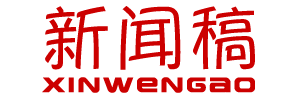Hong Kong, China, August 15, 2017 /Xinwengao.com/ - Optimistic prospect in rebounding Chinese vehicle exports
Connected transport creates prosperity in all sectors. In recent years, China’s vehicle industry has played an increasing role in national economy. Major Chinese automakers have also expanded their business abroad. Since the second half of 2016, Chinese vehicle exports have witnessed a surprising market recovery after a trough.
According to customs data, Chinese exports of whole vehicles in the first five months of 2017 have maintained a year-on-year growth. Broken down by type, the number of both commercial vehicles and passenger cars exported from China has been steadily growing.
Countries along the Belt and Road will become the New Blue Sea for Chinese Vehicles Manufactures
In the face of sluggish vehicle demand in overseas market, the ice-breaking Chinese vehicle export is mainly driven by the Belt and Road Initiative, which helps Chinese manufactures accelerate their presence in overseas emerging markets.
Over the first five months this year, among the list of top ten countries to which China has the largest export volume of whole vehicles, there are six “Belt and Road”countries.
Facing co-existence of opportunities and challenges, challenges exist to cross international market access barriers for China’s motor vehicle exports
Before successfully exporting vehicles to overseas market, Chinese automakers have to face various market access barriers in relation to aspects such as laws and regulations, automotive testing and certification as well as application and registration.
Currently, the common pain points for Chinese automakers to get access to international market lie in the following two aspects:
Difficulty in meeting access requirements in a short period of time – Over the years, domestic sales have outweighed exports for China’s self-owned brands. Factors such as complex and diverse market conditions in destination countries and limited overseas presence lead to knowledge gap of market access threshold of overseas countries and make it hard to get accurate and reliable first-hand information. Faced with cutting-throat competitions, vehicle companies even have to look into access requirements of destination countries, and apply related policies, laws and regulations to products immediately after taking overseas orders, which has created many problems for exporting enterprises.
Conflict between access requirements and products –After taking overseas orders, automakers often find inconsistency between requirements of destination countries and their products, but correction is costly and even causes losses .
Suggestions from T#220;V Rheinland experts:
#8226; Take precautions with timely and comprehensive information on access requirements
Access requirements for application and certification vary in different countries, thus getting comprehensive information on access requirements as early as possible is essential to overcome potential trade barriers.
With professional teams and global service network, T#220;V Rheinland can easily collect certification information all over the world, ravel out complicated formality requirements, and provide timely and accurate research and analysis of laws, regulations and policies, as well as inspection, testing and certification services.
#8226; Take a broad and long-term view by keeping an eye on regulation and policy direction
Regulatory and policy trends have considerable implications for trade barriers such as access requirements. Therefore, T#220;V Rheinland has been keeping an eye on regulation direction of destination countries, helping vehicle companies become more adaptive and flexible in export.

